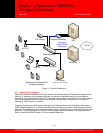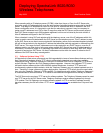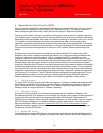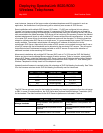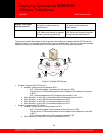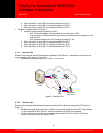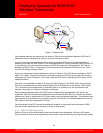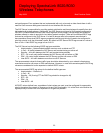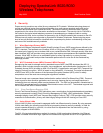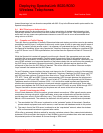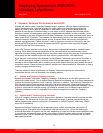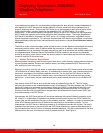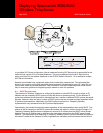
Deploying SpectraLink 8020/8030
Wireless Telephones
May 2009 Best Practices Guide
Figure 7 - Scenario Two
Calls between handset may bypass the call server or PBX and connect directly between SVP Alias IP
addresses. Control messaging will still go to /from the call server or PBX.
As a final note, the wireless telephone learns about all available SVP Servers IP addresses when it
powers up and does the “SRP Check-In” with the Registration SVP Server (identified in DHCP option 151
or set statically). Once the handset are aware of all SVP Servers even if the Registration SVP Server
identified by DHCP option 151 goes down, the handset will still find another SVP Server to use. This is
the SVP self-healing concept in action.
Any new or replacement wireless telephones may fail to Check-In if the SVP Server identified by DHCP
option 151 is down. The new handset has not yet learned the list of all SVP Servers and does not get a
response to its Check-In Request. In this case, check the SVP Server identified by DHCP option 151 for
operational status.
Note that it is not possible to create an IP array of the SVP Servers in the DHCP option as the handset
would not understand this and would instead display “No SVP Response” on the screen. DHCP option
151 is required for the handset when it is operating with an IP protocol but is not required when the
handset is working in an Telephony Gateway environment.
When wireless telephones do the first SRP Check-In Request with the registration SVP Server, the
registration SVP will load balance the handsets across all available SVP Servers. It will tell the wireless
telephone to Check-In with another SVP Server based on a load balancing algorithm. This algorithm does
not guarantee an even distribution of handset across all SVP Servers. The wireless telephone will do an
SRP Check-In with this designated SVP Server.
Once connected to the SVP Server the handset will establish its connection to the call server or PBX,
then will become operational and be ready to make or receive calls.
4.1.4 DSCP for SVP Deployments
Quality of Service on the wired network must also be taken into consideration. With any VoIP system
there is a need for QoS to be configured from end-to-end in order to effectively ensure good audio quality
22
©2009 Polycom, Inc. All rights reserved.
Polycom and the Polycom logo are registered trademarks of Polycom, Inc. All other trademarks are the property of Polycom, Inc. or their respective companies.





